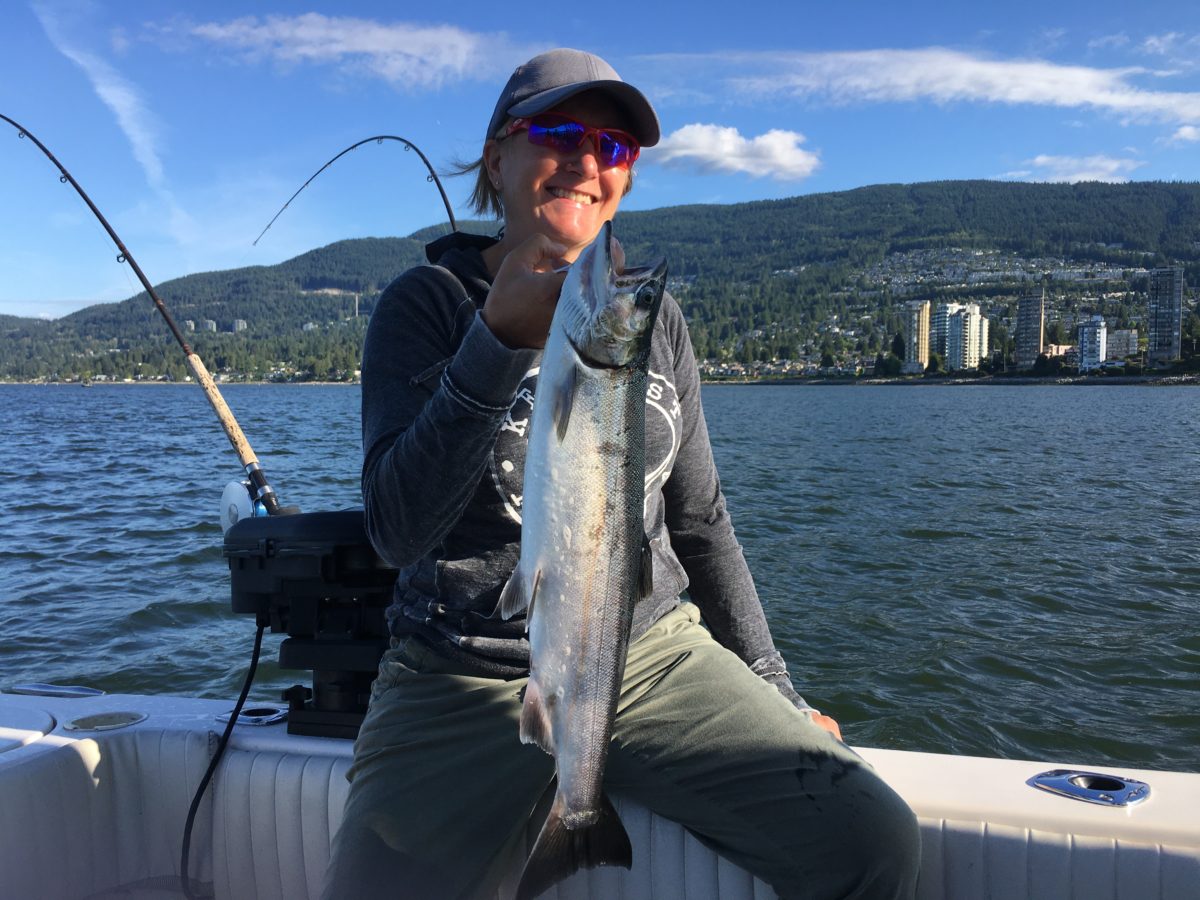OUTLOOK
What a long weekend! We hope everyone had a chance to get out and enjoy the great weather. We are getting hit with a little rain as we head into the weekend but this is a good thing to keep river levels stable and forests damp.
This week we have updates on the Skagit and Thompson trout fisheries. Matt just got back from an excellent trip and has lots of details. We also have some great interior lake updates. Brendan was out and we have intel from our friends at Corbett Lake lodge as well. Things are obviously warming up and slowing but there are still strategies to consider if you are heading out that way.
We also have reports on the Chilliwack and Capilano and we expect good river fishing this weekend.
For the saltwater anglers looking for a report Jason has updates on what gear we are using where. We continue to chase coho in local waters on our shorter trips and if winds allow, we are crossing over to Gabriola on our longer trips in search of chinook. There have even been a few chinook taken along the West Van shoreline in the 28-6 zone, which is open for 1 a day 62-80 cm so now is a great time to get out on the water.
Last, Zach shares a more involved Chronomid Pattern in the feature fly pattern and as always Matt has the report in Video Format here:
FRESHWATER FISHING REPORTS
Capilano River / North Shore Beach Report
The poor weather over Thursday and Friday are a blessing in disguise for any eager angler looking towards the Capilano this upcoming week. As of Thursday morning, the water levels have risen slightly. This weekend may be your best shot to target coho for the rest of summer with a bit more water in the system and slight overcast skies on Saturday.
As of August 1st, the regulations on the Capilano changed to a full bait ban. That means no live, frozen, or artificial baits or scents whatsoever and to be honest, that shouldn’t affect your chances negatively. Throughout this season, artificial lures and flies have been out fishing the stinky stuff consistently. For you gear guys, drifting colorado blades, float jigs, and even wool is a great way to cover water through some runs, and twitching jigs, spoons, or spinners are ideal for fishing the pools up top. F or the more fly inclined anglers, small buggy flies have been the ticket this year. Olive leeches, smaller nymphs and sculpin patterns have produced all year and will continue to be your best bets in this system.
Just as a reminder to all anglers, when inclement weather hits the area, the Capliano can be a dangerous place. Don’t find yourself in the middle of the river as the flow continues to rise and always keep your head on a swivel for changing conditions.
Tight Lines
Aidan Munro
As a reminder here are some useful links:
1. Watch the river levels here: http://www.metrovancouver.org/services/water/sources-supply/watersheds-reservoirs/seymour-capilano-river-levels/Pages/default.aspx
2. If the levels are high go river fishing; if they are low go to the beach.
3. If you are beach fishing try to go on low tides so you can get farther out to the traveling lanes along the beaches. Check the Tides here: https://www.tide-forecast.com/locations/Vancouver-British-Columbia/tides/latest
4. Lower light days and times are key to get the coho closer to shore and the surface. This means overcast days or going early in the morning or late in the afternoon.
Thompson River Fishing Report Update
Last week and into the long weekend I had the time to fish both the Thompson and Skagit . We fished hard three days on the Thompson and two on the Skagit. The soreness in my legs is a testament to the ground we covered.
Fishing had moments of brilliance on both rivers but there are some things to consider if you are going to head up.
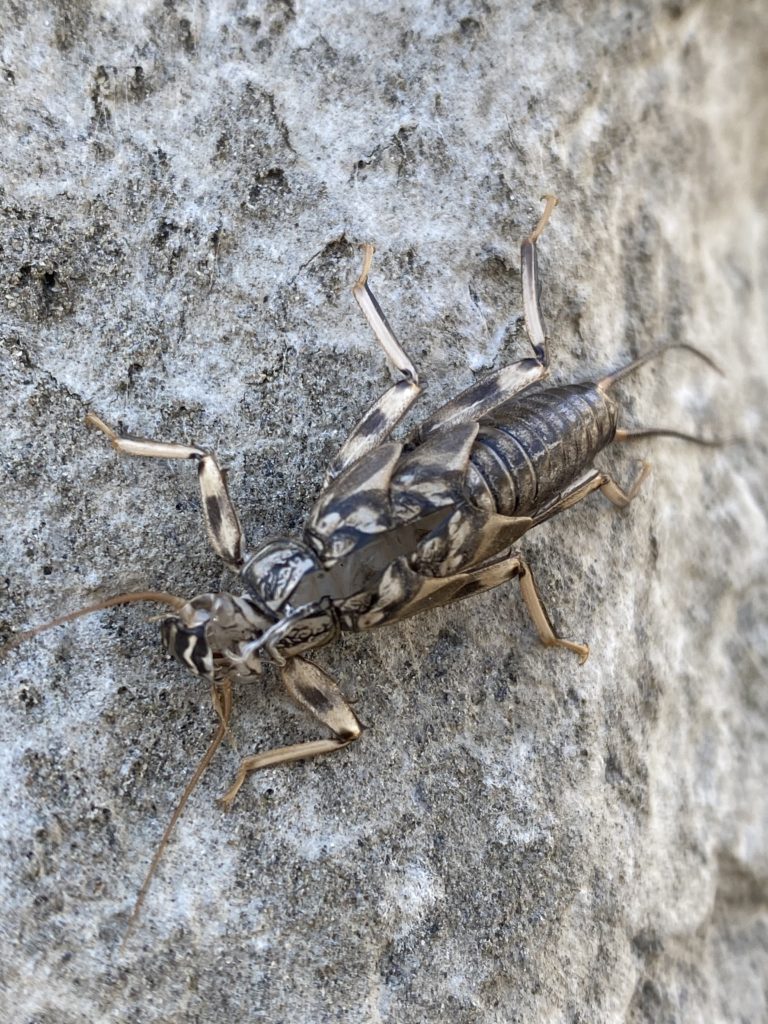
First off, the Thompson is still super high. I fished below Spences Bridge for a half day and though I caught the biggest fish of the trip during this session, the water is cloudy and the fishing was hard. The best section, as expected was above Juniper where clearer water from the lake helped. Water was still high and some of my best spots that are deeper, and off the rip rap banks did not fish well. The working theory is that it was because the water is moving hard, clarity is not great and at depth the fish have much further to move than in the shallower riffle style water.
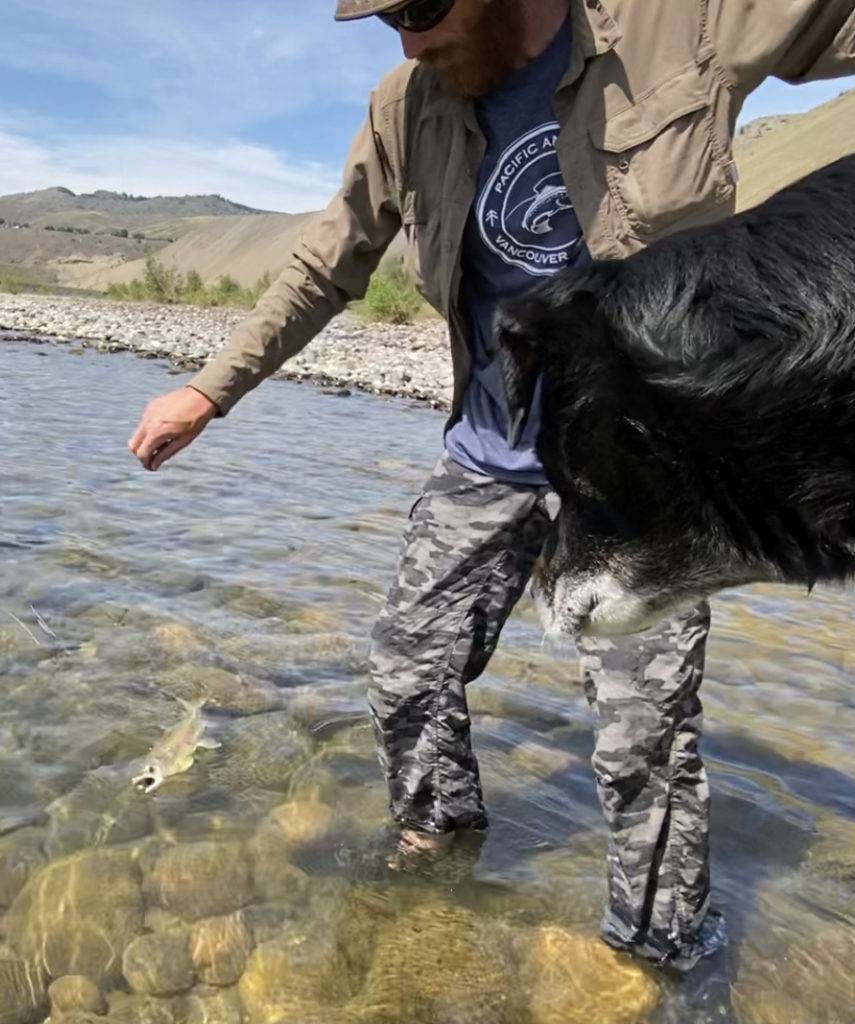
Shallow riffles and classic inside seam water produced well and during a couple sessions it was a fish a cast on hoppers for long stretches.
A Couple of Thompson tips:
- Put cleats in your boots – she is one of the slickest rivers in the world
- If camping, bring ear plugs because every good camp spot is right next to the railway lines
- Unlike the Skagit, it is rare I stay in one spot working an area – Move a ton, your legs should be sore at the end of the day.
Matt Sharp
Skagit River Update
On my way home from the Thompson I spent some time on the Skagit and it is coming into shape nicely. I don’t think the rain we had on Thursday will affect it much but keep an eye on it.
As of Wednesday, I could cross most spots with a little bit of thinking and though I did not have a staff it would have been useful. I saw a couple intermittent hatches of medium sized mayflies and did well on size 12 parachutes, when fish were rising. I also had some fun with emergers and when that wasn’t working small golden stones put up good numbers early in the day and when nothing was happening on the surface.
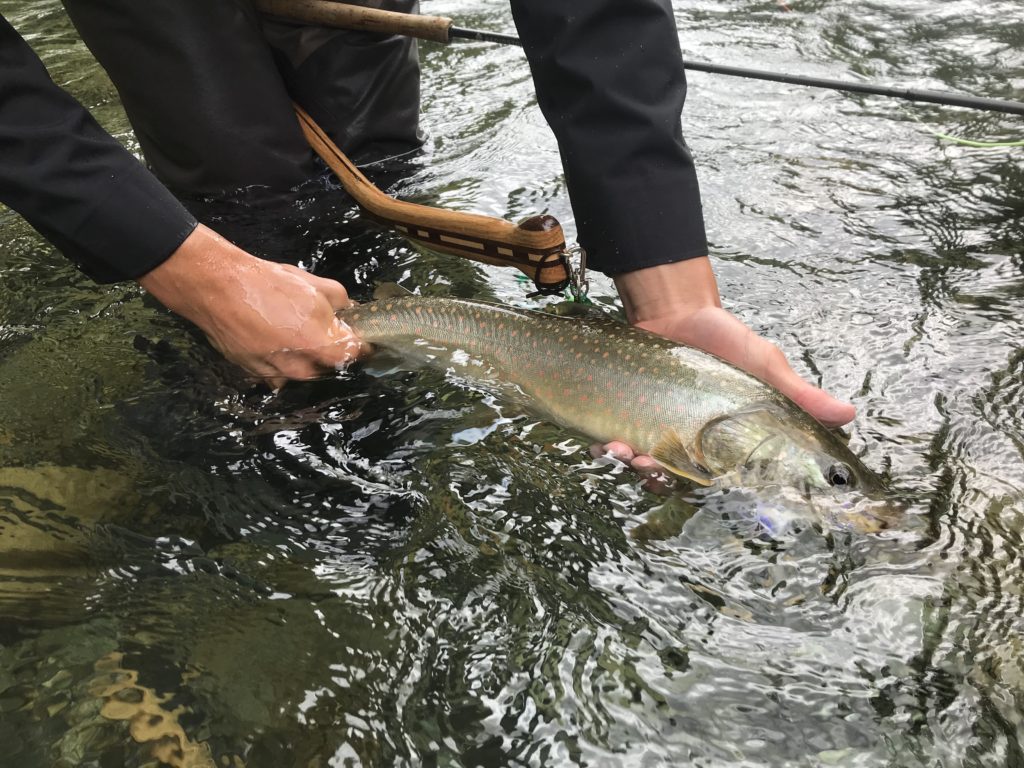
I expect both the Skagit and the Thompson to be good options over the next 2-3 weeks. There are sometimes some concerns about salmon numbers putting the trout off on the Thompson but with the higher water I do not know how it will affect them this year and I saw no sign of salmon.
Matt Sharp
Vedder River Fishing Report
The Vedder/Chilliwack system has continued to drop over the past week and the water is now what I would consider to be prime. Visibility is very good, and levels are approaching what I would consider to be ideal – not too high, but not too low.
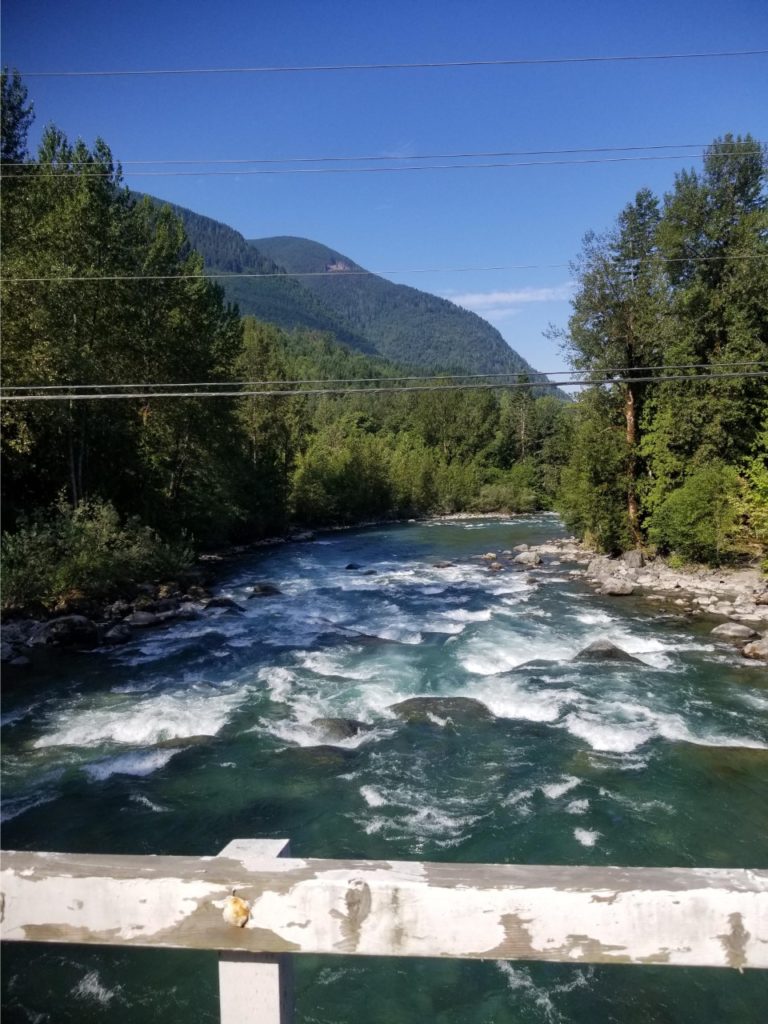
There are still good numbers of red springs in the system, but some are getting on the stale side of things. My prediction about the fish being higher up in the system was correct; a majority of the fish I’ve heard of and seen are now being caught in the mid/upper stretch. As mentioned, it’s starting to get late in the run, and as a result a majority of the fish are getting pretty dark and nasty looking. Bright sunlight and heavy fishing pressure make it still a challenge but your best bet is still going to be running the same gear I mentioned in last week’s report.
One note with fishing methods. we saw a number of anglers using less than ethical techniques. Snag fishing is not legal nor is it ok. Please focus with shorter leaders and aim to run your gear a foot or two off the bottom.
Of course, there are still a few sockeye in the system, but their run is coming to an end as well, with most of the fish being well upstream of the fishing boundary by now. As always, if you do hook a Sockeye, please treat it with respect… they’re fragile fish from a fragile run.
The river changed a lot over the course of the freshet, and now that the water is finally reaching “normal” levels, I’d recommend getting out there and scouting out spots for the fall-run Salmon season. It’s advantageous to know spots beforehand so you’re not wasting time looking for good water when the coho and white Springs are around. Who knows, maybe you’ll get lucky and find a nice late run red while you’re at it.
Taylor Nakatani
STILLWATER FISHING REPORTS
Interior Lake Fishing Report
Summer is now in full swing bringing with it warmer temperatures. These warm temperatures can lead to some interesting bug activity sometimes making fishing challenging. This time of year, hatches are not as concentrated as in the spring. Higher elevation lakes will still be fishing well with days where bombers emerge, or caddis skate around the lake. In most of the other lakes, fish are feeding on staple insects such as shrimp, daphnia, leeches and bloodworms. This makes solving the puzzle a little more challenging. Being prepared to cover water at this time of year can be the key to finding the thermoclines where fish are feeding.
This past week I was up fishing Hihium lake, which is around 4500 ft in elevation. Conditions were hot and I saw little to no prolific bug hatches most days. Personally, I am not a huge trolling fan, however the first day or so I trolled around fishing staple summer patterns such as leeches and dragon fly nymphs on a type 6 sinking line. Trolling in anywhere from 15-30ft of water was productive, producing many fish. I find trolling this time a year a great way to cover water and pick off a few hungry fish feeding on staple food sources.
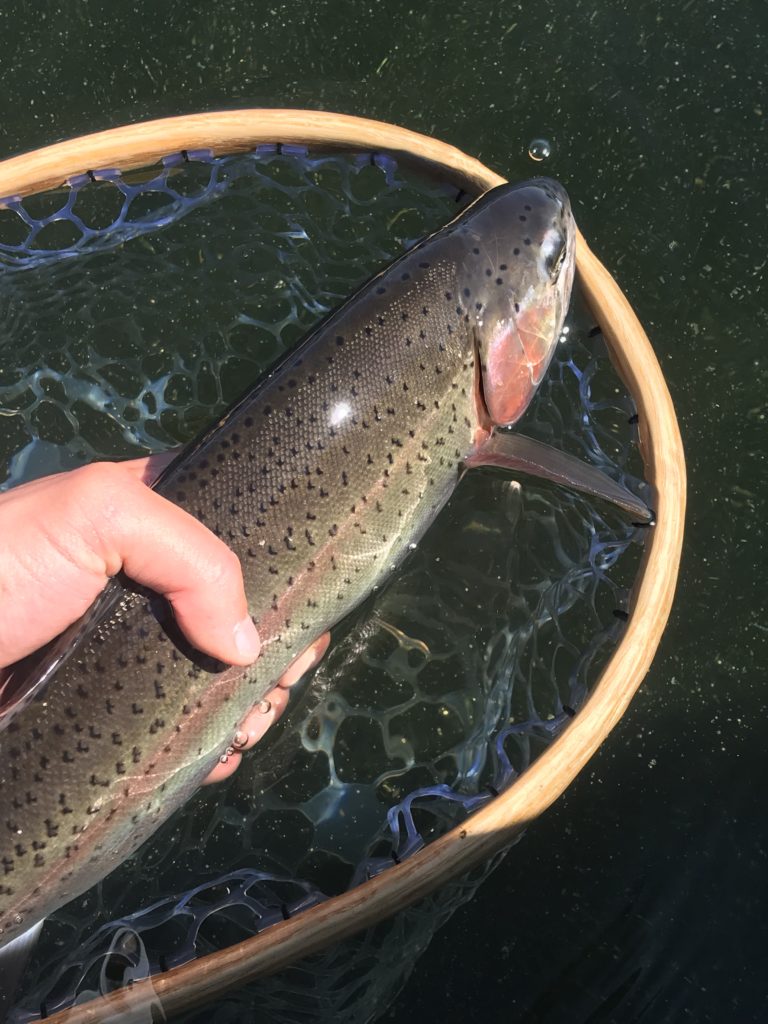
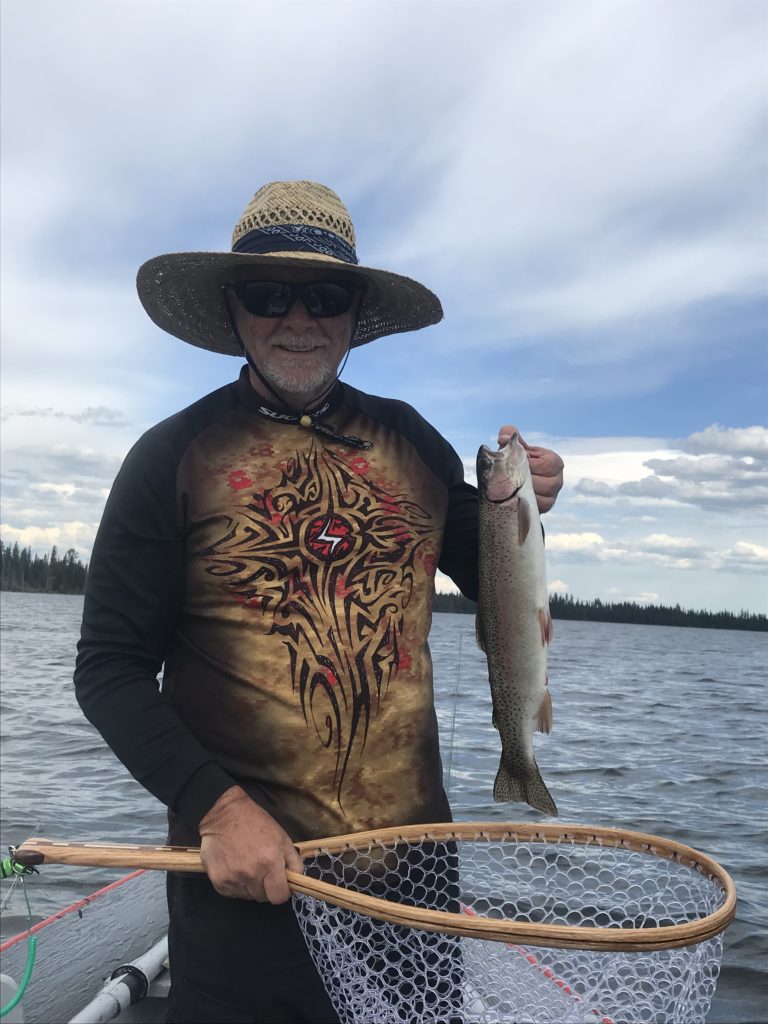
Another method to fish this time of year is to anchor your boat and cast and strip generally with a type 6 or 3 sinking line. During my trip I anchored in anywhere from 10-20ft of water. There I would cast and slowly strip dragonfly nymphs along with leeches. For me, this was a productive way to find fish when no hatches were prominent. I stomach-pumped a few of these fish and most were feeding on daphnia, bloodworms or leeches. When a few caddis began to come off, slowly stripping a caddis pupa was another effective method for me. Furthermore, if these staples aren’t producing, a booby fly can always stir up a few fish.
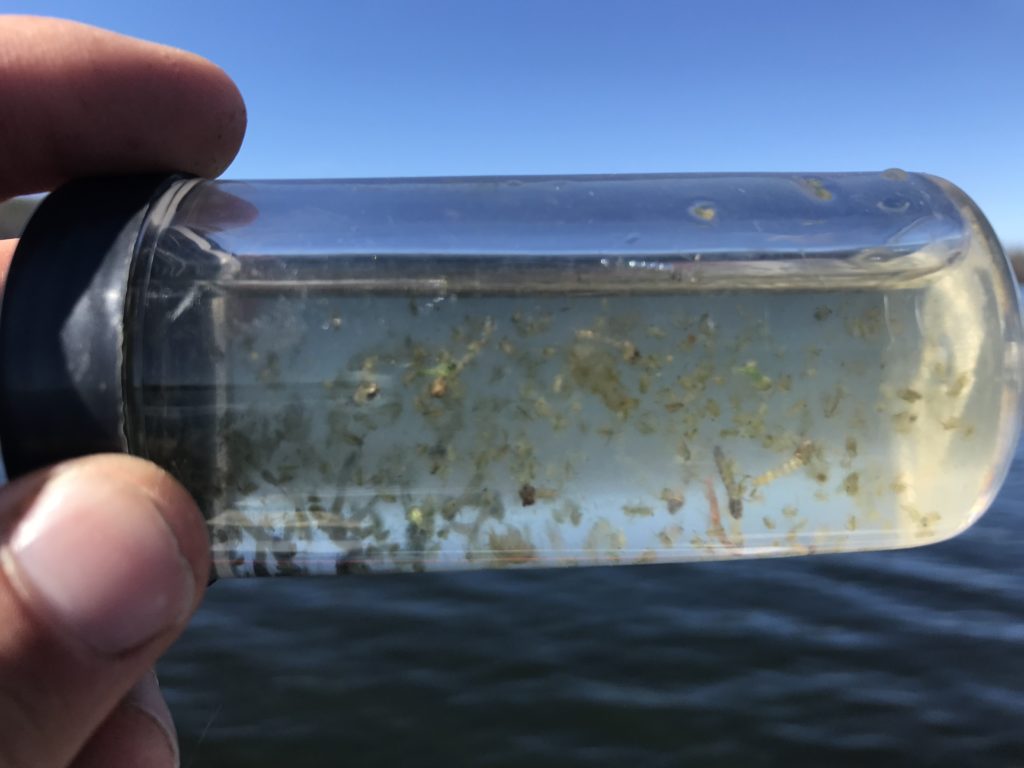
If you are more of an indicator guy, fishing scuds, leeches and even slowly pop-stripped damsels and dragons under an indicator can be effective. Depending on the lake, you may even see a bomber hatch. If all fails, fishing bloodworms right off the bottom this time of year can sometimes save a tough day, producing a few fish. Again, going back to my trip, I had some success fishing balanced leeches and bloodworms under an indicator in anywhere from 15-20ft of water. When I was fishing on my own, I would hang a leech or bloodworm under an indicator with one rod and on another I would cast and strip a dragonfly nymph. This ensured I covered a few food sources, helping me dial in where the fish were and what they were eating.
Looking ahead for this week, it is the middle of summer, so come prepared with different bug imitations as you never know what might be hatching this time of year. Make sure to cover lots of water on the lake, and If nothing is going on, lean towards staple food sources. Try to fish higher elevation or larger lakes too. These lakes typically do not heat up as quick, keeping fishing productive in the summer months.
Brendan Guraliuk
Corbett Lake Fishing Report
Well, the weather and lake have warmed up considerably these past 3 weeks. Lake temperature at last measure 4 days ago was 71C. It’s typical summer fishing, going down as deep as 25 to 35 ft, using big leech patterns in black with red attractor, heavy bead heads and deep chironomid fishing with chromies, blood worm patterns or darker patterns with red wrap are a good bet some days, and dragonfly nymphs. Closer to the surface later in the day, damsels are still coming off and guests have had some success with damsel nymph and sedge patterns. Some other patterns that have garnered some success are Pumpkin Heads, wooley buggers, blobs and boobies. Guests have seen a lot of fish layered up in the deeper water on fish finders.
Fish being caught are averaging from 2 to 6 lbs. with an occasional catch reported of one of our bigger 6 to 10 lb plants that went in last year.
FEATURE FLY
Blended Thread Buzzer
The Blended Thread Buzzer combines all of the techniques that I have gone over in my videos over the past few months. These flies look a lot more difficult than they are; just take your time and these patterns can be quite easy to learn. This colour scheme has done extremely well for me this year when it has been hard to match the hatch. The variety of colours in this fly give the fish a good variety to look at and they end up finding something that they like in this pattern. This fly has become a staple in my box and it should be in yours too!
Zach Copland
Materials List:
- Hook: 3xl curved nymph size 12-18
- Thread: UTC 70 Black, Olive, Rusty Brown
- Rib: Sybai Wide Ultrafine Flat Wire Silver, UTC Ultra Wire Black XSmall or Small
- Wing Buds: Spanflex Brown, Tan or Orange
- Gills: Midge Gill or Antron Yarn White
- Adhesives: Zap-A-Gap Brush On, Solarez Bone Dry
SALTWATER FISHING REPORTS
Not much has changed since last week’s report. We continue to chase coho in local waters on our shorter trips and if winds allow, we are crossing over to Gabriola on our longer trips in search of chinook. There have also been a few chinook taken along the West Van shoreline in the 28-6 zone, which is open for 1 a day 62-80 cm.
On the other side, we have been doing well on glow flashers and hootchies which have been listed in detail in previous weeks reports. The fish are deep, so make sure you have 300 feet or more on your rigger and leave the 15-pound cannonballs at home. With the strong currents and deep fish, an 18 or a 20-pound ball keeps your gear in the zone and allows you to troll faster so your gear is working properly and you are covering water.
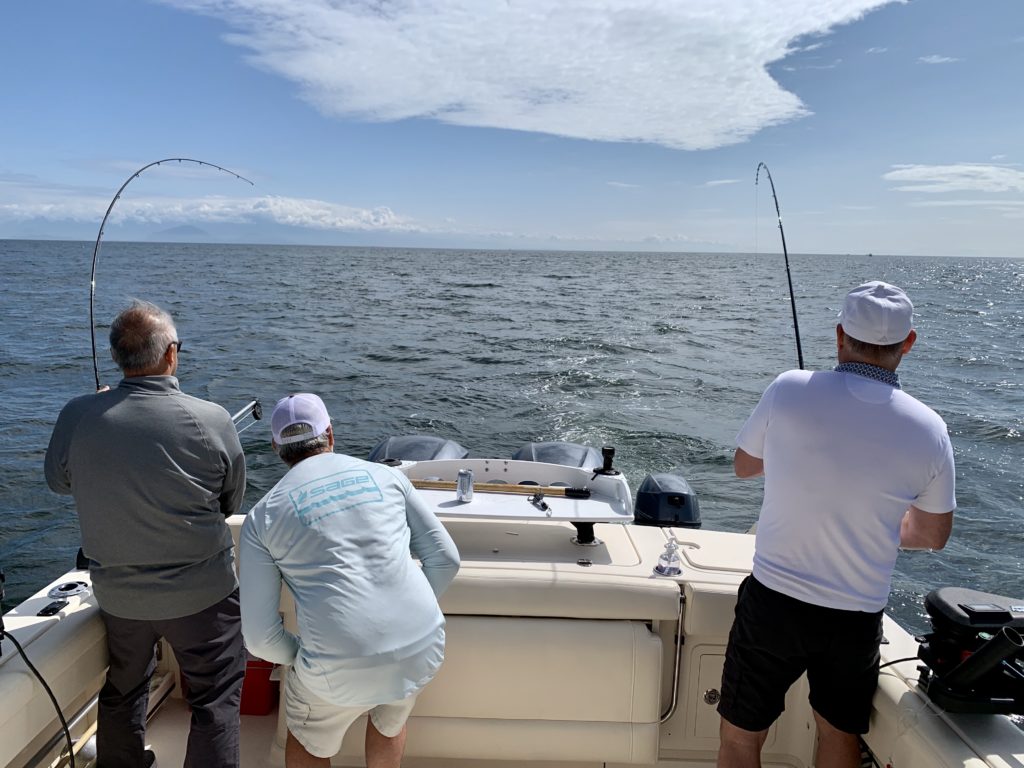
Locally, there are still some coho off South Bowen, but on quite a few days this week it was too windy to get to them. The coho fishing off West Van this week seemed to slow down a bit. Hopefully some more fish will push in soon. This little bit of rain might bring some more into the Harbour.
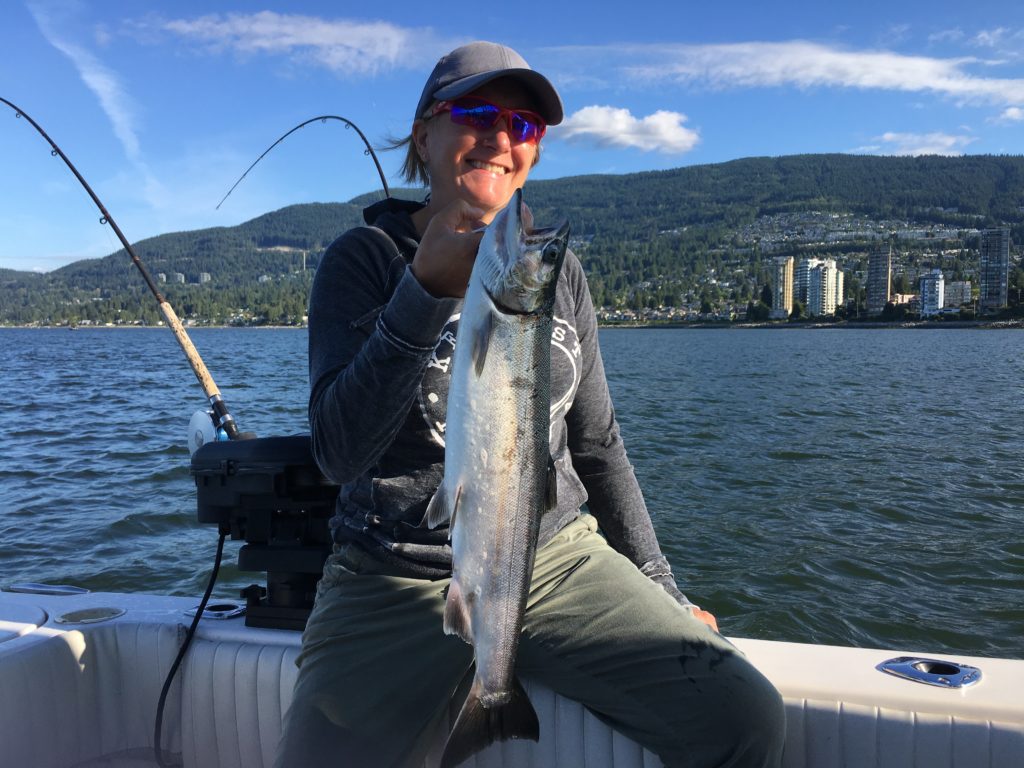
These next few weeks are generally prime time for Cap coho so let’s hope some more show up. I think as long as we can get across to Gabriola, we should be able to get into some decent chinook fishing as well. Before long it will be Sep 1 and we will be off the Fraser Mouth catching the back end of the South Thompson chinook run and the first pushes of the big Harrison and Chilliwack white chinook. That week is booking up fast, so if that interests you please call us ASAP at 778-788-8582. It is definitely some of the best chinook fishing of the year and some of the biggest ones too.
See you in the shop or on the water,
Jason Tonelli


